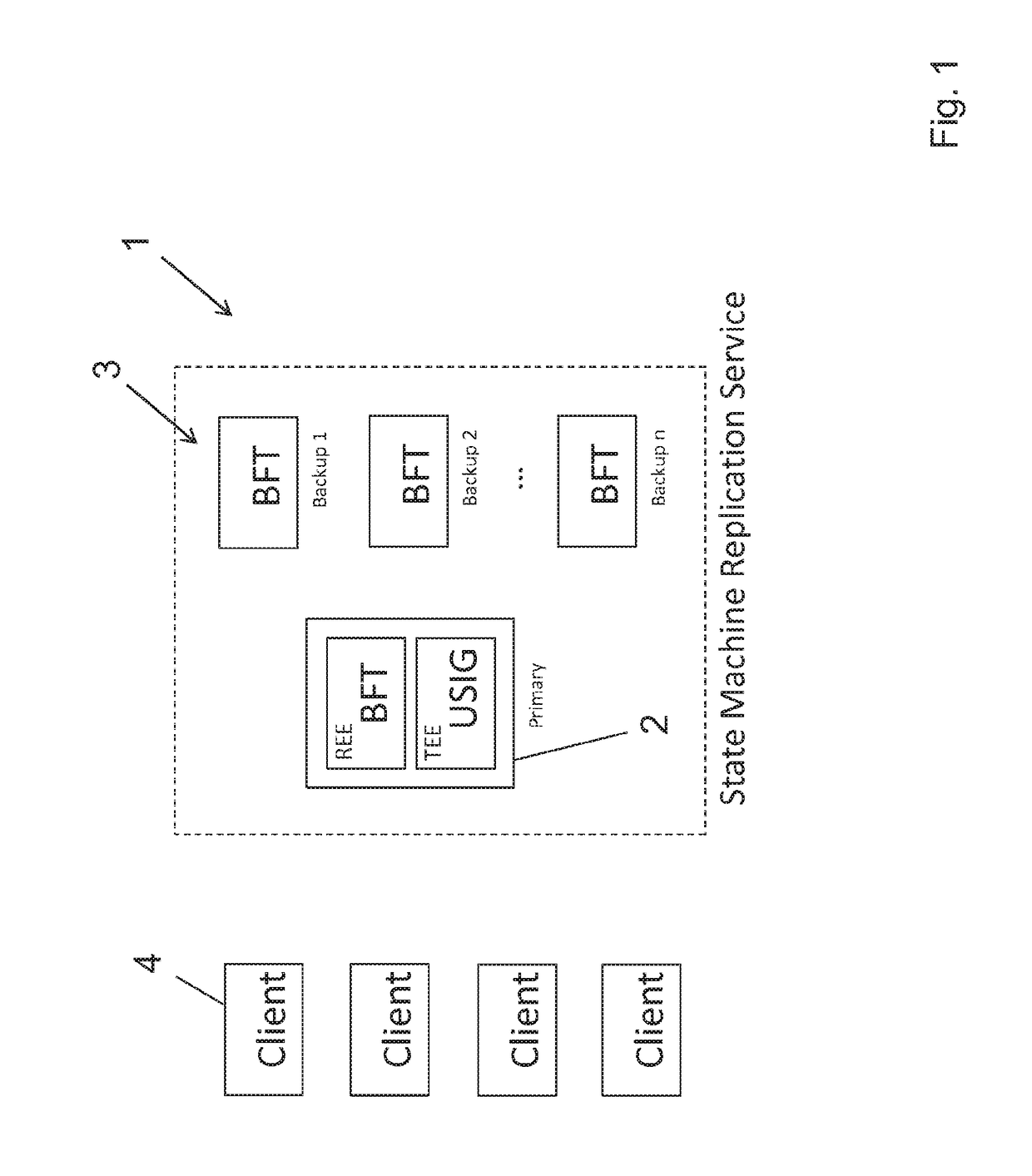Method and system for byzantine fault-tolerance replicating of data on a plurality of servers
a plurality of servers and fault tolerance technology, applied in fault response, digital transmission, instruments, etc., can solve the problems unable to deploy such bft protocols, and unable to meet the requirements of asymmetric fault tolerance,
- Summary
- Abstract
- Description
- Claims
- Application Information
AI Technical Summary
Benefits of technology
Problems solved by technology
Method used
Image
Examples
Embodiment Construction
[0016]Embodiments of the present invention increase the performance and scalability of byzantine fault-tolerant replication of data. Embodiments of the present invention efficiently providing a USIG.
[0017]In an embodiment, the present invention provides a method for byzantine fault-tolerant replication of data on a plurality of n servers, said n servers comprising one primary node, ‘PN’ and n−1 replica nodes, ‘REPN’, wherein f servers may arbitrarily fail, and wherein all n servers having a trusted computing entity, ‘TCE’, comprising the steps of:[0018]a) Performing a request procedure,[0019]b) Performing a prepare procedure[0020]c) Performing a commit procedure and[0021]d) Performing a reply procedure,
Wherein said request procedure according to a) comprises the steps of:[0022]Providing, by a client, a request message for requesting a certain operation,[0023]Transmitting, by said client, said request message to all n servers,
And wherein said prepare procedure according to b) compris...
PUM
 Login to View More
Login to View More Abstract
Description
Claims
Application Information
 Login to View More
Login to View More - R&D
- Intellectual Property
- Life Sciences
- Materials
- Tech Scout
- Unparalleled Data Quality
- Higher Quality Content
- 60% Fewer Hallucinations
Browse by: Latest US Patents, China's latest patents, Technical Efficacy Thesaurus, Application Domain, Technology Topic, Popular Technical Reports.
© 2025 PatSnap. All rights reserved.Legal|Privacy policy|Modern Slavery Act Transparency Statement|Sitemap|About US| Contact US: help@patsnap.com



